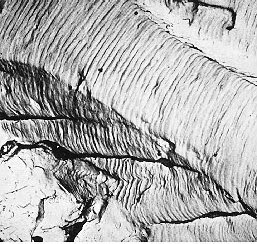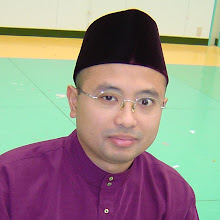- Fatigue Reliability of Magnesium Alloy Metal Matrix Composites for Lightweight Structural Components, Science Fund (MOSTI), RM204,035.
- Rolling Contact Fatigue (RCF) Studies of Railway Track in Malaysia, Science Fund (MOSTI), RM187,497.
- Creep Rupture Properties of Welded Turbine Blade Materials, University Research Grant (GUP) UKM, RM288,500.
Friday, December 19, 2008
Current Funded Research Projects
My Achievement in Fatigue Research
- M.A.M. Daud, M.Z. Omar and Z. Sajuri, Effect of EDM Wire Cut on Fatigue Life of AZ61 Magnesium Alloy, European Journal of Science Research, 2008 (Accepted Nov. 2008).
- Y. Mutoh, Md. Shahnewaz Bhuiyan, Zainuddin Sajuri, High Cycle Fatigue Behavior of Magnesium Alloys Under Corrosive Environment, Key Engineering Materials, Vol.378-379, 131-146 (2008)
- Miyashita, Y. Mutoh, Y. Sajuri, Z. b., Fatigue Test for Magnesium Alloy, SAE SP, 2103:77-88 (2007)
- Zainuddin Sajuri, Yukio Miyashita & Yoshiharu Mutoh, Effect of Loading Frequency on Fatigue Behavior of Magnesium Alloy in Humid Environment, Jurnal Mekanikal , 22: 115-131 (2007)
- Sabrina Alam Khan, Yukio Miyashita, Yoshiharu Mutoh, Zainuddin Bin Sajuri, Influence of Mn content on Mechanical Properties and Fatigue Behavior of Extruded Mg Alloys, Mater. Science & Engng. A 420, 315-321 (2006)
- Zainuddin Bin Sajuri, Yukio Miyashita, Yasunobu Hosokai, Yoshiharu Mutoh, Effects of Mn Content and Texture on Fatigue Properties of As-cast and Extruded AZ61 Magnesium Alloys, Int. J. Mechanical Sciences 48, 198-209 (2006)
- Z. B. Sajuri, Y. Miyashita and Y. Mutoh, Effects of Humidity and Temperature on Fatigue Behavior of Extruded AZ61 Magnesium Alloy, Fatigue Fract. Engng. Mater. Struct., 28, 373-379 (2005)
- Zainuddin Bin Sajuri, Yukio Miyashita, Yoshiharu Mutoh and Yasunobu Hosokai, Effect of Texture on Fatigue Properties of an Extruded AZ61 Magnesium Alloy Plate, Key Engineering Materials, Vol.274-276, 193-198 (2004)
- Zainuddin Bin Sajuri, Takeshi Umehara, Yukio Miyashita and Yoshiharu Mutoh, Fatigue-Life Prediction of Magnesium Alloy for Structural Applications, Advanced Engineering Materials 5 (12), 910-916 (2003)
- Zainuddin Bin Sajuri, Yukio Miyashita and Yoshiharu Mutoh, Effect of Stress Ratio on Fatigue Crack Growth Behavior of Magnesium Alloys, Materials Science Forum 419-422, 81-86 (2003)
- Zainuddin Bin Sajuri, Yukio Miyashita and Yoshiharu Mutoh, Fatigue Characteristics of an Extruded AZ61 Magnesium Alloy, J. Japan Inst. Light Metals, 52 (4), 161 (2002)
- Y. Miyashita, Z.B. Sajuri, S. Zhu and Y. Mutoh, Small Fatigue Crack Propagation in Si3N4 at High Temperature, J. Society of Mater. Sci. Japan, 47 (11) 1137-1142 (1998)
List of Proceedings:
- A.R.Said, J.Syarif, and Z.Sajuri, HAZ CHARACTERIZATION OF GTD-111 NICKEL BASED SUPERALLOY WELDING, 1st Engineering Postgraduate Conference, Uniten Putrajaya, (2008).
- Z. Zulkoffli, J.Syarif and Z. Sajuri, FABRICATION OF AZ61 MAGNESIUM ALLOY FROM A PRE-ALLOYED POWDER USING PM PROCESS, 1st Engineering Postgraduate Conference, Uniten Putrajaya, (2008).
- Z.Sajuri, M.A.Aziman and A.W.Ikhsan, CRACKING OF RAILWAY TRACK IN KLANG VALLEY, 1st Engineering Postgraduate Conference, Uniten Putrajaya, (2008).
- M.A.M. Daud, M.Z. Omar and Z. Sajuri, Effect of EDM Wire Cut on Fatigue Life of AZ61 Magnesium Alloy, 1st Engineering Postgraduate Conference, Uniten Putrajaya, (2008).
- Z. SAJURI*, J. SYARIF, M. Z. OMAR, M. M. ALLAFI and M.F. SUDAR Fatigue and Fatigue Crack Growth Behavior of Tool Steel, 1st WSEAS International Conference on Materials Science (MATERIALS'08), Bucharest, (2008).
- Zulkoffli Z., Daud M.A.M., Syarif J., Sajuri Z., Fabrication of Magnesium Alloy From Pre-Alloyed Powder Using Hot Die Compaction Process, 13th International Conference on Applied Mehanics and Mechanical Engineering AMME-13, Cairo (2008).
- Zuliani Zulkofli, Mohd Ahadlin Mohd Daud, Mohd Azrieasrie Mohd Aziman dan Zainuddin Sajuri, High Temperature Powder Compaction Process of Magnesium Alloy, One Day Seminar on Advanced Materials Research, UKM (2007)
- Zainuddin Sajuri, Y. Miyashita, Y. Hosokai and Y. Mutoh , , , Effect of Texture on Fatigue and Fatigue Crack Growth Behavior of Extruded AZ61 Magnesium Alloy , Proceeding of Malaysia-Japan International Symposium on Advanced Technology (MJISAT2007) , Kuala Lumpur (2007)
- Zainuddin Bin Sajuri, Yukio Miyashita and Yoshiharu Mutoh, Effects of Loading Frequency on Fatigue Behavior of Magnesium Alloy in Humid Environment, 1st Regional Conference on Vehicle Engineering And Technology 2006 (RiVET 2006).
- Muhammad Fauzi Mohd zain, Syarif Junaidi Sjarifuddin Djalil, Nasharuddin Zainal, Yuhaizad Yusof, Mardina Abdullah dan Zainuddin Sajuri, Pendekatan Dari Sistem Pembelajaran Uiversiti-Universiti di Jepun ke Arah Kecemerlangan Pelajar-Pelajar Fakulti Kejuruteraan UKM, Seminar Pengajaran dan Pembelajaran Berkesan 2005, 63-67 (2005), UKM Bangi, Selangor.
- Zainuddin Bin Sajuri, 2005, Pengaruh Proses Pembuatan Terhadap Kelakuan Aloi Magnesium, Kolokium JKMB 2005 Penyelidikan dan Pengembangan 2005: Penyelidikan dan Pendidikan Kejuruteraan- Cabaran Masa Kini , 61-68 (2005), UKM Bangi, Selangor.
- Zainuddin Bin Sajuri, Yukio Miyashita and Yoshiharu Mutoh, Effects of Frequency on Fatigue Strength and Fatigue Crack Growth Behavior of Magnesium Alloy, International Conference on Recent Advances in Mechanical and Materials Engineering, (2005) Kuala Lumpur.
- Zainuddin Bin Sajuri, Yukio Miyashita and Yoshiharu Mutoh, Influence of Extrusion Direction on Fatigue Behavior of Extruded AZ61 Magnesium Alloy Plate, Proc. 107rd Conference of Japan Ins. Light Metals, 237-238 (2004), Tokyo, Japan.
- Zainuddin Bin Sajuri, Yukio Miyashita and Yoshiharu Mutoh, Fatigue crack growth behavior of an extruded AZ61 Magnesium alloy plate, Proc. 27th Symposium of Fatigue, Soc. Mater. Sci. Japan, 129-132 (2004), Kyoto, Japan.
- Zainuddin Bin Sajuri, T. Umehara, Y. Miyashita and Y. Mutoh, Effects of Surface Roughness and Notch Sensitivity on Fatigue Behavior of AZ91D Magnesium Alloy, International Conference on Magnesium -- Science, Technology and Applications, (2004), Beijing, China.
- Zainuddin Bin Sajuri, Y. Miyashita, Y. Mutoh and Y. Hosokai, Effect of Texture on Fatigue Properties of an Extruded AZ61 Magnesium Alloy Plate, Asia-Pasific Sysposium on Eng. Plasticity and Its Applications, (2004), Shanghai, China.
- Zainuddin Bin Sajuri, Yukio Miyashita and Yoshiharu Mutoh, The Effect of Extrusion Direction on Fatigue Crack Initiation and Propagation Behavior of AZ61, Proc. 53rd Technical Conference, The Society of Materials Science, Japan, 248-249 (2004), Okayama, Japan.
- Yoshiharu Mutoh, Zainuddin Bin Sajuri and Yukio Miyashita, Fatigue of Magnesium Alloys, Proc. 4th International Materials Technology Conference & Exhibition, Ins. Materials Malaysia (2004), Kuala Lumpur, Malaysia.
- Zainuddin Bin Sajuri, Takeshi Umehara, Yukio Miyashita and Yoshiharu Mutoh, Fatigue-Life Prediction of Magnesium Alloy for Structural Applications, Proc. 6th International Conference and Exhibition On Magnesium Alloys and Their Applications (Magnesium 2003), p.19 (2003), Wolfsburg, Germany.
- Zainuddin Bin Sajuri, Takeshi Umehara, Yukio Miyashita and Yoshiharu Mutoh, Effect of Manufacturing Process on Fatigue Behavior of AZ61 and AZ91D Magnesium Alloys, Proc. 11th Sysposium on Fracture and Fracture Mechanics, The Society of Materials Science, Japan, 37-42 (2003), Kyoto, Japan.
- Zainuddin Bin Sajuri, Yukio Miyashita and Yoshiharu Mutoh, Fatigue Life Prediction of Extruded AZ61 Magnesium Alloy, Proc. 105rd Conference of Japan Ins. Light Metals, 183-184 (2003), Chiba, Japan.
- Zainuddin Bin Sajuri, Yukio Miyashita and Yoshiharu Mutoh, Effect of Stress Ratio on Fatigue Crack Growth Behavior of Magnesium Alloys, Proc. Magnesium 2003 International Conference, 81-86 (2003), Osaka, Japan.
- Zainuddin Bin Sajuri, Yukio Miyashita and Yoshiharu Mutoh, Fatigue Crack Growth Behavior of Extruded AZ61 Magnesium Alloy, Proc. 26th Symposium of Fatigue, Soc. Mater. Sci. Japan, 57-60 (2002), Tokyo, Japan.
- Y. Miyashita, Z.B. Sajuri, T. Umehara and Y. Mutoh, Effect of Environment on Fatigue Behavior of AZ61 Magnesium Alloy, Proc. Of the 8th Int. Fatigue Congress, Fatigue 2002, 3301-3308 (2002), Stockholm, Sweden.
- Takashi Umehara, Zainuddin Bin Sajuri, Yukio Miyashita and Yoshiharu Mutoh, Effect of Surface Roughness on Fatigue Behavior of Magnesium Alloy, Proc. 103rd Conference of Japan Ins. Light Metals, 59-60 (2002), Ibaraki, Japan.
- Zainuddin Bin Sajuri, Yukio Miyashita and Yoshiharu Mutoh, Effect of Environment on Fatigue Characteristics of Extruded AZ61 Magnesium Alloy, Proc. 103rd Conference of Japan Ins. Light Metals, 61-62 (2002), Ibaraki, Japan.
- Zainuddin Bin Sajuri, Yukio Miyashita, Jinquan Xu and Yoshiharu Mutoh, Effect of Environment on Fatigue Behavior of AZ61 Magnesium Alloy, The Japan Society of Mech. Engineers, M & M (2001), Hokkaido, Japan.
- Y. Miyashita, Z.B. Sajuri, S. Zhu and Y. Mutoh, Cyclic Fatigue Crack Initiation and Propagation in Si3N4 at High Temperature, Proc. 5th Japan International SAMPLE Symposium, 28-31 (1997), Hawaii, USA.
Fatigue Crack Initiation and Propagation Mechanisms

- Dislocations play a major role in the fatigue crack initiation phase.
- Large number of loading cycles dislocations pile up and form structures called persistent slip bands (PSB).
- 1st stage: PSBs are areas that rise above (extrusion) or fall below (intrusion) the surface of the component due to movement of material along slip planes.
- 2nd stage: tiny microcracks join together and begin to propagate through the material in a direction that is perpendicular to the maximum tensile stress. Eventually, the growth of one or a few crack of the larger cracks will dominate over the rest of the cracks.

Fatigue Crack Propagation Mechanism

IS IT IMPORTANT?
- Absolutely! An understanding of fatigue effects is CRITICAL to the design of devices and structures that may be subjected to cyclic loading during their lifetime.
- Fatigue effects often cause failures which remain undetected until a catastrophic fracture occurs, frequently at a very inopportune time and without warning.
- These failures drive up warranty costs and cause considerable customer dissatisfaction. The worst case is the potential for devastating financial losses and even endangering lives.
- Therefore, the prediction of fatigue behavior can no longer be considered optional.
Fatigue failure
- Estimated to cause 90% of all failures of metallic structures
- Fatigue failure is brittle-like (relatively little plastic deformation)- even in normal ductile materials
- Fatigue failure is sudden and catastrophic
- Associated with cyclic or fluctuating stresses
- Failure can occur at stresses considerably lower than tensile or yield strengths of materials under a static load
- Cyclic stresses causing fatigue may be:
–Axial: tension or compression
–Flexural: bending
–Torsion: twisting
3 distinct stages in a fatigue failure
- Crack initiation
•Near stress concentration
•90% of the fatigue life is taken up trying to initiate a crack - Crack propagation
•Incremental advance of the crack with each stress cycles - Final catastrophic failure
•Remaining area (ligament) cannot bear the load
Fatigue appearance
- Fatigue striations
–Evidence of crack propagation with each stress cycle
–Not seen with unaided eye – requires electron microscope
Sunday, November 30, 2008
What Is Fatigue?

Fatigue is a special kind of failure of material in which fracture occurs not because of an instantaneous load that is applied, causing a crack to grow. Rather, it is because a stress is applied for some period of time in which the cracks gradually grow until they finally reach a critical level. This concept is especially important when dealing with metals because it is the single most common cause of failure in metallic structures. There has been much study done on the concept, and much has been learned since the beginning of the study of fatigue. Since much has been learned about fatigue, much has been done in the way of learning how to prevent it. For instance it is almost universally accepted that the cracks in fatigue always start on the surface of a material, so therefore, in order to prevent fatigue from occurring, one should strengthen the surface of the material, making it more difficult to fatigue.
(Sean Grealis)

